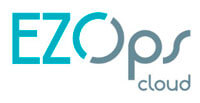Welcome to our journey into the world of Cloud Architecture, where seamless integration meets the diverse operating systems of Windows, Linux, and Mac.
We’ll explore the intricacies of crafting scalable, secure, and efficient solutions tailored for websites. Whether you’re a tech enthusiast or a small business owner, discover how cloud architecture can elevate your online presence. Exploration of cloud solutions for a new era of digital excellence.
Here’s a simplified architecture for such a scenario:
Web Application Hosting:
Utilize a Platform-as-a-Service (PaaS) offering like AWS Elastic Beanstalk, Google App Engine, or Microsoft Azure App Service for hosting your web application. These services abstract away the underlying infrastructure complexities.
Containerization:
Leverage containerization for the web application using Docker. This ensures consistent deployment across Windows, Linux, and Mac environments.
Database:
Choose a cloud-managed database service such as Amazon RDS (for MySQL or PostgreSQL), Google Cloud SQL, or Azure Database for MySQL/PostgreSQL to store your website’s data.
Content Delivery:
Implement a Content Delivery Network (CDN) like AWS CloudFront, Google Cloud CDN, or Azure CDN to optimize content delivery, enhancing website performance.
Authentication and Authorization:
Use a cloud-based identity service for user authentication. AWS Cognito, Google Identity Platform, or Azure Active Directory B2C are suitable choices.
Serverless Functions:
For specific functionalities, consider implementing serverless functions using AWS Lambda, Google Cloud Functions, or Azure Functions. These can be written in a language compatible with Windows, Linux, and Mac.
Cloud Storage:
Utilize cloud storage solutions such as Amazon S3, Google Cloud Storage, or Azure Blob Storage for storing static assets, media files, and backups.
Monitoring and Analytics:
Implement monitoring and analytics tools like AWS CloudWatch, Google Cloud Monitoring, or Azure Monitor to track the performance and user behavior on your website.
Security:
Ensure secure communication using HTTPS. Leverage cloud providers’ security features and regularly update and patch your application components.
Continuous Integration and Deployment (CI/CD):
Set up a CI/CD pipeline using services like AWS CodePipeline, Google Cloud Build, or Azure DevOps to automate testing and deployment processes.
